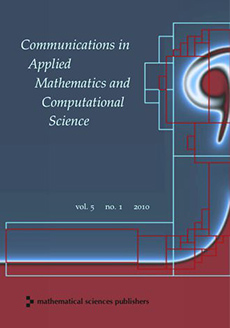Abstract
We present a numerical method for computing the signed distance to a piecewise-smooth surface defined as the zero set of a function. It is based on a marching method by Kim (2001) and a hybrid discretization of first- and second-order discretizations of the signed distance function equation. If the solution is smooth at a point and at all of the points in the domain of dependence of that point, the solution is second-order accurate; otherwise, the method is first-order accurate, and computes the correct entropy solution in the presence of kinks in the initial surface.
Citation
Peter Schwartz. Phillip Colella. "A second-order accurate method for solving the signed distance function equation." Commun. Appl. Math. Comput. Sci. 5 (1) 81 - 97, 2010. https://doi.org/10.2140/camcos.2010.5.81
Information





